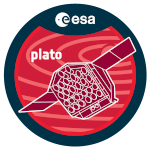The architecture of observed exoplanet systems is tailored by planet formation in protoplanetary disks and by the star-planet interactions making planet orbit on secular timescales. Previous statistical studies using NASA's Kepler mission have revealed a dearth of close-in planets around fast rotating stars, but recent research suggests this may be related to observational bias when TESS observations are added. To shed light on the physical processes leading to the observed architecture of exoplanet systems, in this work we compare the confirmed single exoplanet planet systems observed by Kepler to a synthetic population computed with the star-planet evolution code ESPEM. This approach takes into account tidal and magnetic interactions between a star and a single planet from the disk-dissipation phase up to the end of the main sequence. The study is limited to confirmed single planet systems orbiting around a main-sequence single star (no binaries, no evolved stars, no multi-planets). We find the existence of a dearth of close-in planets orbiting around fast rotating stars depending on the stellar spectral type (F, G, and K) in both observations and simulations, and find that the dearth seems stronger for the F-type stars. The number of M planet host systems is not enough to assess any strong conclusions. Realistic formation hypothesis included in the model and the proper treatment of tidal and magnetic migration are enough to qualitatively explain the dearth of hot planets around fast rotating stars.
|
|
|
Abstracts > sorted by Authors > Strugarek AntoineArchitecture of Kepler single exoplanet systems compared to star-planet evolution models
1 : Université Paris-Saclay
CEA, CNRS, Université Paris-Saclay, CEA Saclay 91191 Gif sur Yvette France
2 : Instituto de Astrofísica e Ciências do Espaço, Universidade do Porto, CAUP,
3 : Instituto de Astrofisica de Canarias
4 : INAF- Osservatorio Astrofisico di Catania
5 : CentraleSupélec
CNRS, CentraleSupélec, UPMC, Univ Paris Su
|

 PDF version
PDF version
